
Natural Nation
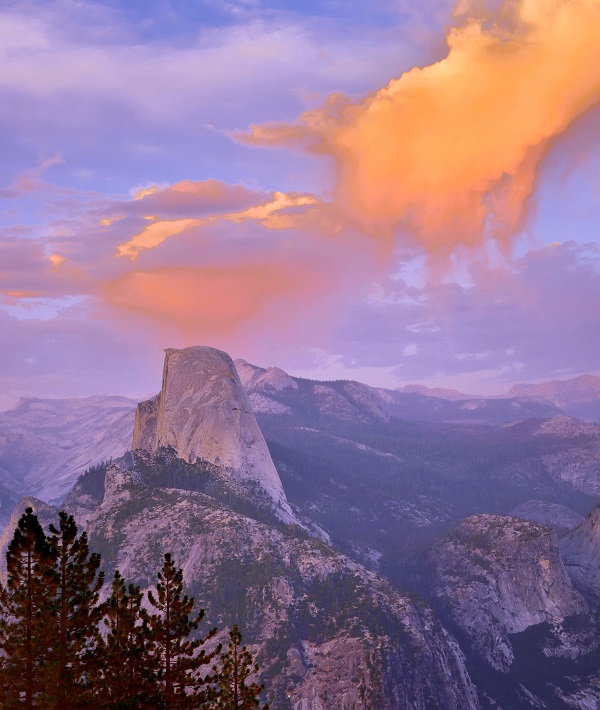
Something amazing is closer than you think. From rainforests to rock formations, badlands to wetlands, mountaintops to marshes, get ready to be surprised at the unlikely environments that are just a drive away. Read on to find the coolest places in the country, listed by state.
Alabama
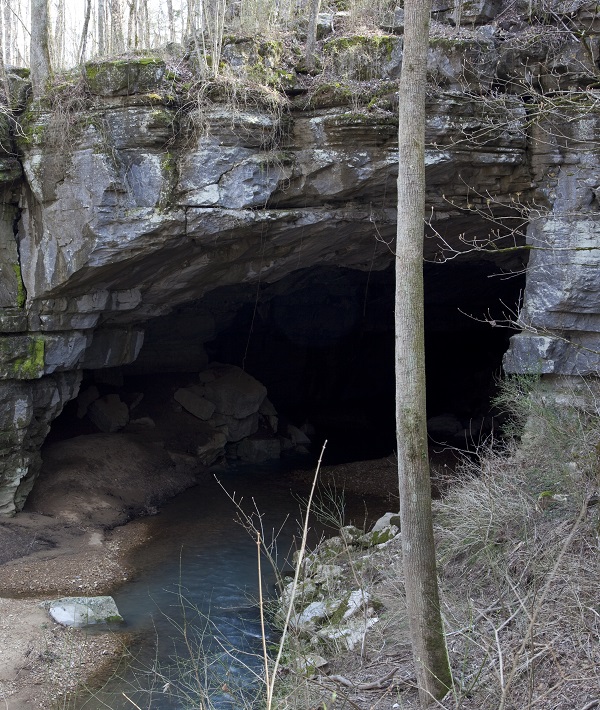
Thousands of years ago, when rocks collapsed at the entrance of Russell Caves National Monument in Bridgeport, Alabama, it became a natural shelter to prehistoric people. For a span of over 10,000 years people dwelled in the caves, leaving behind tons of cool archeological evidence. Today, the calming stream flowing through the middle of the cave makes for a serene scene as you ponder on what life must have been like enclosed in the protective rock walls.
Alaska
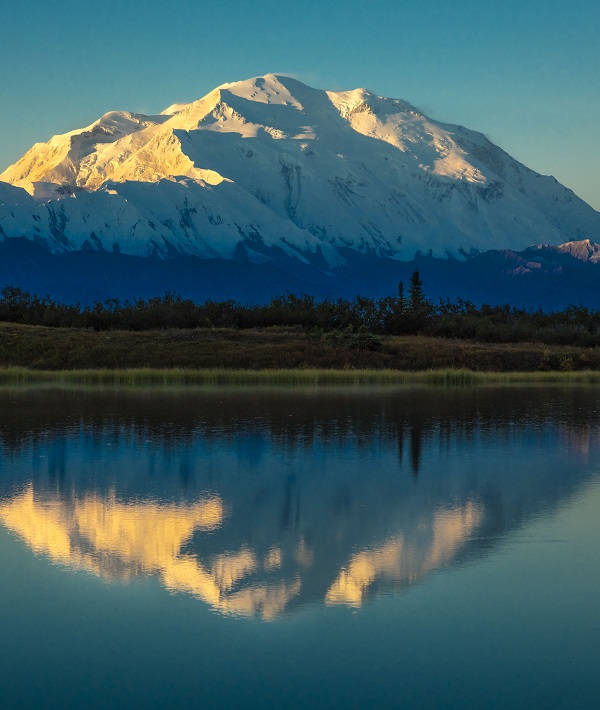
Views are stunning and vast at Denali National Park and Preserve in Alaska, the tallest land-based mountain in the world. Only one road allows visitors a glimpse of six million acres of powdered cliffs, snow tundra and roaming wildlife. When aurora borealis, aka the Northern Lights, are dancing in the sky, the white foreground of Denali is a striking contrast against the neon-streaked night.
Arizona
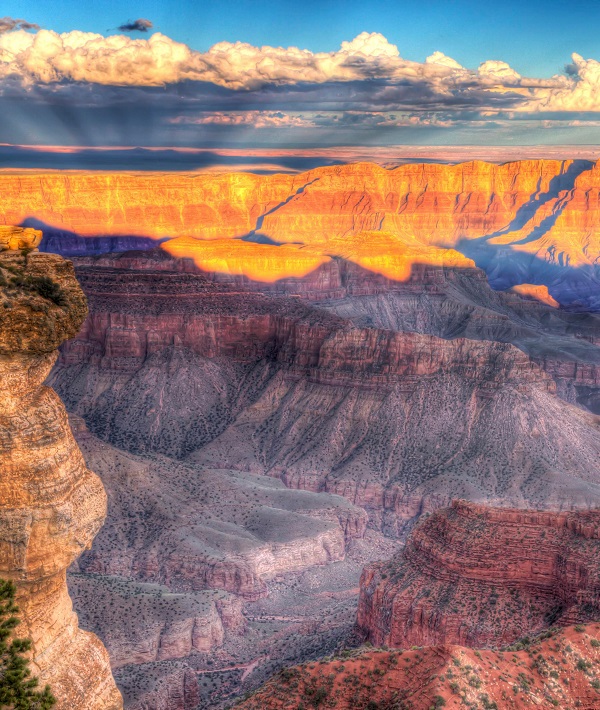
Roadtrippers everywhere hope to travel the famed Route 66 to reach the Grand Canyon National Park in Arizona. Over the course of millions of years, red rock eroded into the massive mile deep canyon we see today. The rusty canyon walls were carved out by the Colorado River. More than just rock formations, about 600 different species of animals live throughout the spacious gorge.
Arkansas
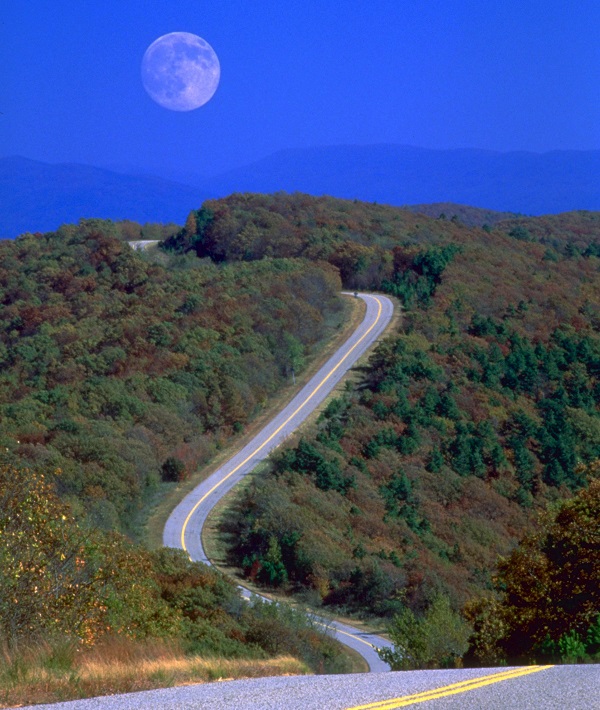
Technically, Ouachita National Forest spills into Oklahoma, but most of the pine and dogwood tree-filled land is headquartered in Arkansas. From elevated peaks, the rolling views of the horizon are breathtaking. Known for its hot springs, Ouachita covers major ground, spanning 1.8 million acres of land all together. This natural site is also a popular place for quartz mining, even allowing visitors to pick their own for free at the Crystal Vista.
California

Little in the world compares to Yosemite Valley in Central California. With its towering granite cliffs, high waterfalls and mellow meadows in every direction, no visitor leaves unchanged from the sight of these legendary feats of nature. Often described as one of the most beautiful places on earth, some of the best views can be spotted from Glacier Point or Columbia Rock.
Colorado

At the Mesa Verde National Park in Colorado, observers can see how Ancestral Pueblo people lived over 700 years ago. The cliff dwellings that remain were created between 600 to 1300 C.E. by the indigenous people who shaped them and called them home. Over 600 of these cool shelters made of stone and earth remain at Mesa Verde, making this an invaluable archeological site for the studies of ancient civilizations.
Connecticut

The small town of Kent, Connecticut is headquarters to the little slice of heaven known as Kent Falls State Park. Easy, breezy hiking trails line the mountains and are traced by calming waterfalls. Many love the covered bridge and picnic tables that make this a family friendly hotspot, but amenities are overshadowed by the natural splendor of the falls.
Delaware

Birds migrating in Kent, Delaware, have Bombay Hook National Wildlife Refuge as a safe haven for breeding and resting their wings. The majestic fowl float peacefully on the waters and often fly away in flocks, making this a lovely scene to take in for any passers-by. Bombay Hook features freshwater impoundments and one of the largest tidal salt marshes in the mid-Atlantic.
Florida

Its unique advantage of climate conditions makes the Florida Everglades the largest subtropical wilderness in the country and definitely one of the coolest. This well-balanced natural landmark can accommodate the survival needs of an extremely diverse cast of living species. Find Florida panthers, alligators and manatees living among orchids, cacti and algae in this Southern environmental melting pot.
Georgia

Nicknamed Georgia's "Little Grand Canyon," Providence Canyon State Park is a local favorite for hiking and camping. Poor farming practices in the 1900s unintentionally added to the rate of erosion and formed some of the deeper gorges, but that didn't stop this red rock formation from echoing the brilliance of its westward mentor. For a particularly special experience, visitors try to spot the rare and delicate plumleaf azalea, which only grows in Georgia and Alabama.
Hawaii

Although Hawaii is over 2000 miles away from its continental cousins, the 50th state contributes ample beauty and natural value to America. One of the most mesmerizing attractions is Kilauea, the most active out of the five volcanoes that make up the Island of Hawai'i. Lava spews and explodes to meet the Pacific Ocean, creating a spectacle you surely won't find anywhere else in the world.
Idaho

Called everything from "a city of tall spires" to "steeple rocks," the City of Rocks in Idaho is an adventurer's dream. In addition to offering opportunities to hike and go rock climbing, the so-called "silent city" also boasts replica wagons from the California Trail, a path west that ran through the natural reserve in the 1840s and '50s for pioneers to take to the Golden State.
Illinois

Thousands of years ago, the melted waters of glaciers eroded everything but the sandstone that still stands and makes up a large part of Starved Rock State Park in Oglesby, Illinois. In a region known for its flat farming lands, the 18 canyons of Starved Rock (14 of which have waterfalls) are exceptional and anything but one-dimensional. The interesting mix of Native and French settlers of the park's past allow researchers to observe two ancient cultures in this one appealing area.
Indiana

Sitting at the southern tip of Lake Michigan, Indiana Dunes National Lakeshore is 15,000 acres of versatile natural wonderland. The soft sands have a reputation for mimicking a whistling sound underneath your feet, earning them the moniker "The Singing Sands." If you travel beyond the sloped mounds, you'll find an ecosystem full of vegetation, resident wildlife, bogs, marshes and other smaller bodies of water sculpted by glaciers long ago.
Iowa

Starting at Lake Itsaca in Minnesota, the Mississippi River flows southward until it empties into the Gulf of Mexico via Louisiana. The best place to stop along the 2,340 mile long waterway is just north of Davenport, Iowa, at the Upper Mississippi River National Wildlife and Fish Refuge where nature meets fun. This is the optimal place to enjoy activities like hiking, paddling, fishing and birdwatching.
Kansas

If you focus your eyes in the right place while driving Route 83 through Gove County, Kansas, you'll spot the 70-foot-tall formations of Niobrara Chalk called Monument Rocks. The ridged and gritty exterior of the formations add to their awesome desert aesthetic. The rocks were created over 8 million years ago when there was an inland sea, the ancient Kansas Sea of Cretaceous, and have fossils embedded throughout proving their history.
Kentucky

Kentucky stores a massive cave system underground, the longest found on the planet, in fact. The Mammoth Cave National Park was named for its huge size, with 400 miles explored so far and more added to that total each year. The limestone labyrinth is filled with formations that seemed to have dripped into shape. The cave system is subterranean, but the surface contains interconnected ecosystems made up of forests, rivers and springs.
Louisiana

If Louisiana is known for one natural characteristic more than others, it would have to be for its bounteous swamps. The Atchafalaya Basin is the largest river swamp in the nation, spanning close to one million acres of bayous, lakes and wetlands. The bald cypress, a pine known for losing its needles in autumn, can be found with above-ground roots that work as anchors peeking from the waters and reaching heights up to 14 feet tall.
Maine

Not only is Acadia National Park a favorite staycation destination for locals, but the coastal Maine landmark is one of the most visited national parks in America. Once sponsored by famous philanthropist John D. Rockefeller, Jr., Acadia has the kind of beauty that inspires and ignites the imagination. The diversity of terrain, including the beaches, wetlands, forests and mountains that make up the park, allows visitors a chance to sample any form of nature they please.
Maryland

In the 1830s, when the Chesapeake and Ohio Canal first reached Maryland, it was thought to be the solution to transportation issues of the time. Used to move important cargo like coal and lumber along the Potomac River, the canal was quickly replaced due to unpredictable flooding, financial issues and the first railroad in America that soon overruled the practicality of the canal. Today, the famous waterway is a place to relax and rediscover history through its old-school charm.
Massachusetts

Peaking at 3,491 feet, Mount Greylock is the highest natural point in Massachusetts. The impressive landmark is a part of the Appalachian Mountain chain and allows climbers who reach the top a chance to see up to 90 miles away. The view from Greylock's summit is enough to make you want to set up camp permanently, but the experience is just as fulfilling for a slightly shorter visit.
Michigan

Located in the Upper Peninsula of Michigan, the powerful Tahquamenon Falls spills 50,000 gallons of water over a 50-foot drop every second! The copper tint of the waters of Upper Falls is due to the high concentration of tannin it contains. There are a handful of smaller waterfalls nearby, but they don't measure up to one of the largest waterfalls east of the Mississippi.
Minnesota

Sure, the Pipestone National Monument in Minnesota is majestic to look at, but the awesomeness of this place goes beyond the façade. Used as a meeting place for local Native Americans, Pipestone was named after the practice of collecting the red rock material that abounds and fashioning it into pipes used for ceremonial prayer. This special pipe-making tradition has been passed down for generations and is still used today.
Mississippi

If you find yourself in Mississippi, you'll want to stop over at the Greenville Cypress Preserve. This is where 16 acres of land are reserved to protect the regional cypress trees, along with some other local foliage. Observers love the tree's knees, which are really its roots sticking out from the swamp, creating its own wondrous sight and providing landing perches for the birds that visit frequently.
Missouri

Although limestone deposits created the Meramec Caverns in Missouri over 400 million years ago, the massive system wasn't discovered until 1933. Since then, visitors have admired the now idolized formations that have earned names appropriate to their shapes, like "The Greatest Show Under Earth" referring to a sheet wall of formations resembling a stage curtain, and "The Wine Table" which is known to be one of the world's rarest cave formations.
Montana

Watch the sky look up at itself at the magnificent Glacier National Park in Montana. Dubbed the "Crown of Continent," streams are sourced from these headwaters and flow throughout North America, including into the Pacific Ocean, Hudson River and Gulf of Mexico. Hike the Rocky Mountains, visit the many lakes or sightsee the hundreds of plant and animal species that live in this oasis, including the rare wolverine and Canadian lynx.
Nebraska

Northwestern Nebraska's Toadstool Geological Park is interesting, to say the least. If it isn't obvious, the badlands derive its name from the unique round toadstool rock formations it contains. Even though the area has a dry and gritty desert feel, it is apart of the larger Oglala National Grasslands, which also borders South Dakota and Wyoming and covers over 94,000 acres of land.
Nevada

Slightly west of Las Vegas, Nevada, is where you'll find Red Rock Canyon beautifully contrasted with unlikely desert colors, like the vibrant greens and yellows of scattered foliage. Ancient and modern American Indian civilizations found natural resources among the sandstone clusters that the surrounding conditions made scarce. Today, the rusty complexion rock formations showcase a set of peaks called the Keystone Thrust, one area out of 26 hiking trails that hikers can choose to explore on their own.
New Hampshire

At the base of Mount Liberty in Franconia Notch State Park in New Hampshire is Flume Gorge. The naturally created gorge is lined with Conway granite that was formed almost 200 million years ago during the Jurassic period. The walls of this lovely landmark are up to 90 feet high with only 12 to 20 feet between them. The roaring Avalanche Falls tops off the flume, since a hanging boulder that prevented water flow was washed away in a huge storm in 1883.
New Jersey

In New Jersey, the Paterson Great Falls were created about 13,000 years ago, concluding the last Ice Age. When Alexander Hamilton visited the falls in 1778, he was so inspired by the potential water power of the aggressive falls that he planned the first industrial city in Paterson. The changes that came with the industrial revolution added plenty of manmade structures around the falls, but nature was the superior architect.
New Mexico

In New Mexico, the Carlsbad Caverns National Park preserves the Capitan Reef, one of the best-kept ancient fossil reefs in the world, left behind by a prehistoric inland sea and made up of sponges and algae instead of coral. Inside the caves, the icicle-like formations were formed from millions of years of rain and snow seeped through limestone, evaporating and leaving behind a small amount of calcite-based minerals in the 119 caves that make up this cool landmark.
New York

More than likely you've heard of the iconic falls bordering New York and Canada, but did you know Niagara Falls State Park contains three separate waterfalls? The American Falls, Bridal Veil Falls and Canadian Falls all contribute to the mighty downpour that we've probably all seen in a movie. Don't let the pop culture overexposure deter you from visiting one of the most incredible natural sites you'll see in your lifetime.
North Carolina

A visit to Clingmans Dome in North Carolina provides you with the essential three V's of natural scenic perfection: valleys, views and vastness. At over 6,600 feet, Clingmans is the highest mountain of Great Smoky Mountains National Park. If the day is clear enough, you can reach the peak and see for up to 100 miles. With 360-degree views at the top of the mountain, peace and panoramic potential await you and tempt you to stay awhile.
North Dakota

For his love of exploration and preservation of nature, the Theodore Roosevelt National Park in North Dakota was named after our 26th president. When Roosevelt lost both his wife and mother on Valentine's Day in 1884, he took solace in Elkhorn Ranch, his second property in North Dakota. The ranch is still standing and able to be viewed by visitors today.
Ohio

There's only one national park in Ohio and it lies between Cleveland and Akron. The Cuyahoga Valley is a buffet of ecosystems, offering varieties of wetlands and forests, meaning it can comfortably accommodate the 900 species that live there. Locals love the serenity the park offers away from the city, even though it is located conveniently nearby. Visit the popular Brandywine Falls or Bridal Veil Falls, which resembles the sheer tulle fabric similar to a bride's accessory.
Oklahoma

Along the southern Great Plains in Oklahoma are the Wichita Mountains. The rugged peaks encircle a prairie that is both beautiful and bountiful. The Wichita Mountain Wildlife Refuge is also onsite and has successfully reintroduced bison, elk and wild turkeys to their native habitats. The bison, along with other grazing animals like the elk, deer and longhorn cattle, are used to keep the park's vegetation under control.
Oregon

When Mount Mazama erupted in Oregon 7,700 years ago, it didn't last longer than a couple of days, but by then the mountain had started to collapse on itself. The partially filled void turned into Crater Lake, the deepest lake in the United States. Thanks to its clear waters and rich blue hue, some consider it among the most gorgeous lakes, too. Did you know that a log called "Old Man of the Lake" has been bouncing and floating vertically in the lake for over a century?
Pennsylvania

If you enjoy whitewater rafting or have ever considered giving it a try, think about taking a trip to Ohiopyle State Park in Pennsylvania. Even if you're not into boating, the Youghiogheny River has adjoined waterfalls that you could spend hours watching in peaceful silence. For more hands-on fun, hang out at the Meadow Run Waterslides, an unusual collection of potholes and ripples that work as truly natural (and incredibly fun) water slides.
Rhode Island

Next to mansions and Sheep Point Cove in Rhode Island, you'll find the Newport Cliff Walk, a popular designated National Recreation Trail. Although the 3.5 mile trail didn't occur naturally, you're virtually transported by the adjacent sea and its show-stopping views. Wildflowers, birds singing melodiously and waves crashing against the shoreline provide every ingredient you'd need for one of Mama Nature's original recipes.
South Carolina

Emptying into St. Helena Sound, and eventually the Atlantic, the ACE Basin in Hollywood, South Carolina, is a significant estuary. Named as a collective acronym for the three major rivers that flow into it—the Ashepoo, Combahee and Edisto rivers—almost 12,000 acres of the basin are reserved as a National Wildlife Refuge, while even more acreage is used to preserve the wetlands, marshes and ecosystems that makeup the area.
South Dakota

Featured in Disney's 2007 film "National Treasure: Book of Secrets," Sylvan Lake in South Dakota is famous for multiple reasons. Before the film ever existed, Sylvan Lake had already made a name for itself with locals and visitors, becoming the focal point of the Black Hills in Custer State Park. The best way to enjoy the renowned lake is to rent a small boat, rock climb or simply jump in and have a swim.
Tennessee

Not only is Place of a Thousand Drips a must-see waterfall associated with the Great Smoky Mountains in Tennessee, it's a convenient one! Able to be reached by driving most of the way, this dramatic waterfall can be viewed from the comfort of your car. Rainy days are best for visiting Thousand Drips, when water cascades into multiple channels and creates a roaring fall like you'll never see anywhere again.
Texas

Sharing the border with Mexico, Big Bend National Park in Texas, similar to the Florida Everglades, has wildlife and plants that can be found far into both the Northern and Southern Hemisphere. Big Bend has more species of birds, bats and cacti than any other national park. Drastic differences in elevation also lend to the sundry of species in this diverse landmark full of volcanic dikes, dinosaur bones and sea fossils.
Utah

The gorgeous contrasted color of flora to rock formation at Bryce Canyon National Park in Utah is incomparable to anything you've ever seen. The layers of rock are laced with fossils of species that lived up to 40 million years ago! The northern surface of Bryce Canyon receives rainfall more than the "breaks," or "pink cliffs" (exposed bottom portion), of the amphitheater. Because of this fertile sediment, lush vegetation grows freely, making for colorful views.
Vermont
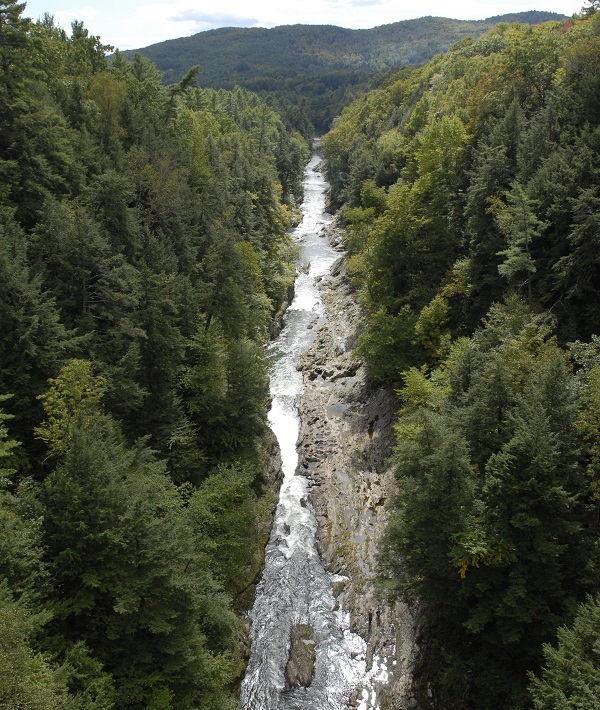
The deepest gorge in Vermont, the Quechee Gorge, helped keep 500 people in the nearby village employed in the 19th century by powering a wool processing company with its surging waters. Now, families come here to hike, fish and enjoy the sounds of the waters passing over stone eroded 13,000 years ago. Kayaking is also an option on the Ottauquechee River, which flows through the bottom of the gorge.
Virginia

The heavily forested banks of the Potomac River are a sight to see. The best time to visit the river is at dusk to watch the sun descend under the lush horizon of trees. Surely that's why George Washington chose to live next to the flowing landmark. The headwaters of the South Branch of the Potomac River lie in Virginia, where you can almost see the living history, picturing boats full of cargo floating through the passages of the waterway.
Washington

As a state that knows a thing or two about a rainy day, Washington has some of the country's most amazing landmarks created by nature. Hoh Rainforest tops the list for its lustrous plant life, fed by the annual rainfall average of 12 to 14 feet per year. The Hoh River adds to this wet wonderland, containing glacial sediments that give it a deep, rich blue hue that's distinctly different from other waterways nearby.
West Virginia

The boundaries of the Monongahela National Forest in West Virginia include 1.7 million acres of land and more than half of it is reserved to protect resident animals, including the 50 sensitive plants and 9 threatened and endangered wild species it accommodates. Find white-tailed deer, rabbits and black bears calling Monongahela home. Notable landmarks within the forest include the Back Allegheny Mountains and Spruce Knob Lake.
Wisconsin

Visited more than any other state park in Wisconsin, over 3 million people file into Devil's Lake State Park each year. The ancient quartzite bluffs tower 500 feet over the lake, giving visitors a breathtaking view of the scenery below. Devil's Lake gets even better with all the recreational activities available, like rock climbing and even scuba diving (although its max depth is only 45 feet).
Wyoming

Surprisingly, the Old Faithful Geyser in Yellowstone Park in Wyoming isn't as faithful as its name would have you think. Eruptions can be predicted, but Old Faithful does what it wants to, never really sticking to a schedule. The moody geyser can erupt for up to five minutes, about 20 times a day, spewing thousands of gallons of water over 100 feet into the air. Even though intervals between eruptions take 60 to 110 minutes, it's well worth waiting for.




